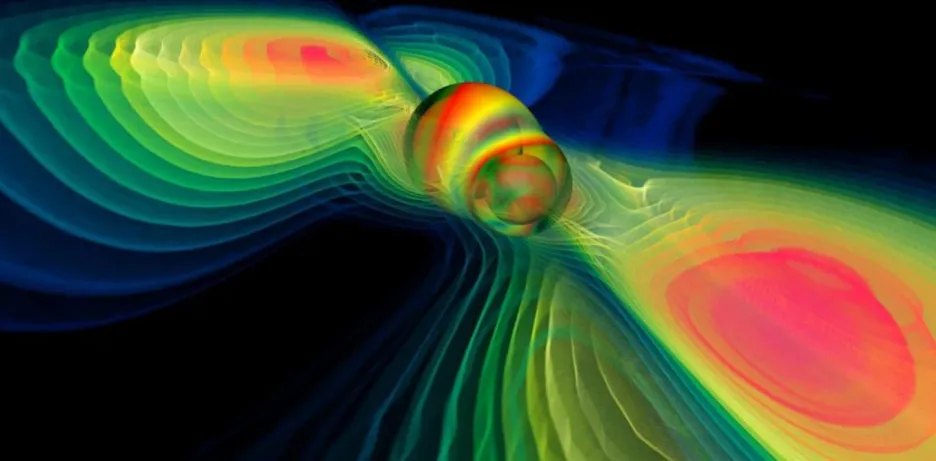Gravity or gravity propagates in waves – just like light. Only instead of radiation is it propagated by vibration: this wave does not concern the particles, but the actual structure of space. Until 2016, all scientific information about the universe came only from electromagnetic waves, such as radio waves, visible light or gamma rays. Unlike these sources, gravitational waves are not subject to any interference and can therefore bring a lot of new knowledge about the surrounding cosmos.
Gravitational waves are mainly caused by collisions of supermassive objects, such as black holes and neutron stars – these events are so strong that they shake space-time itself and emit waves that we can capture on Earth using huge devices such as the LIGO detector. These waves are huge, their wavelengths range from hundreds to thousands of kilometers.
–
But scientists have long wondered if it would not be possible to capture even smaller gravitational waves, if they exist at all. These could have a wavelength of “only” from a few meters to several kilometers. Therefore, several devices were created that should be able to capture something like this. One of these was created by the team of Australian physicist Michael Tobar.
Tobar likens this device to a bell that rings in a certain tone. “If a wave of gravity hit him, it would ring him,” he outlined for Space.com. This gravitational wave trap is protected by a series of radiation shields so that it is not disturbed by radiation.
The experiment then lasted about half a year. During that time, the bell rang twice, each time for one to two seconds, the scientists described the results in a professional journal. Physical Review Letters.
What can it be?
Discovering these waves was, despite the time-consuming nature, the easiest part of the research – it is much harder to find a logical explanation of what it was. One of the possible explanations are also mistakes, in other words a possible device error. For example, instead of gravitational waves, he could detect charged particles called cosmic rays flowing from space, Tobar speculates. Another possibility could be the hitherto unknown type of thermal fluctuations in the crystal, which is the basis of the “trap”, but these should be minimal.
–
However, there are also a number of exotic possibilities, such as the type of dark matter known as the axion, which rotates around a black hole and emits gravitational waves, the authors of the study state. Other possible explanations might even require hitherto unknown physics, which goes beyond the so-called standard model, which describes almost all subatomic particles and forces in the universe, Tobar said.
Echoes from the beginnings of the universe
Another possible explanation, to which the authors of the experiment paid the most attention, is fascinating – it could be signals from the time shortly after the creation of the universe. Modern physics works by saying that shortly after the Big Bang, the universe went through a very short but extremely dynamic period called inflation. During it, it increased exponentially and went through a so-called phase shift. This means that it has changed state, just as water changes from liquid to gaseous when the boiling point is exceeded.
–
Some models assume that if this happened, a significant amount of energy could be released, which would gently shake space-time – resulting in smaller gravitational waves similar to those now observed by scientists.
Neither the authors of the experiment nor other physicists have enough evidence yet for any of the possibilities; it would be ideal to create several other similar experiments. If they recorded the same event, it would rule out the possibility of failure or unknown crystal behavior – and it would also provide more data for more detailed analysis.
– .


